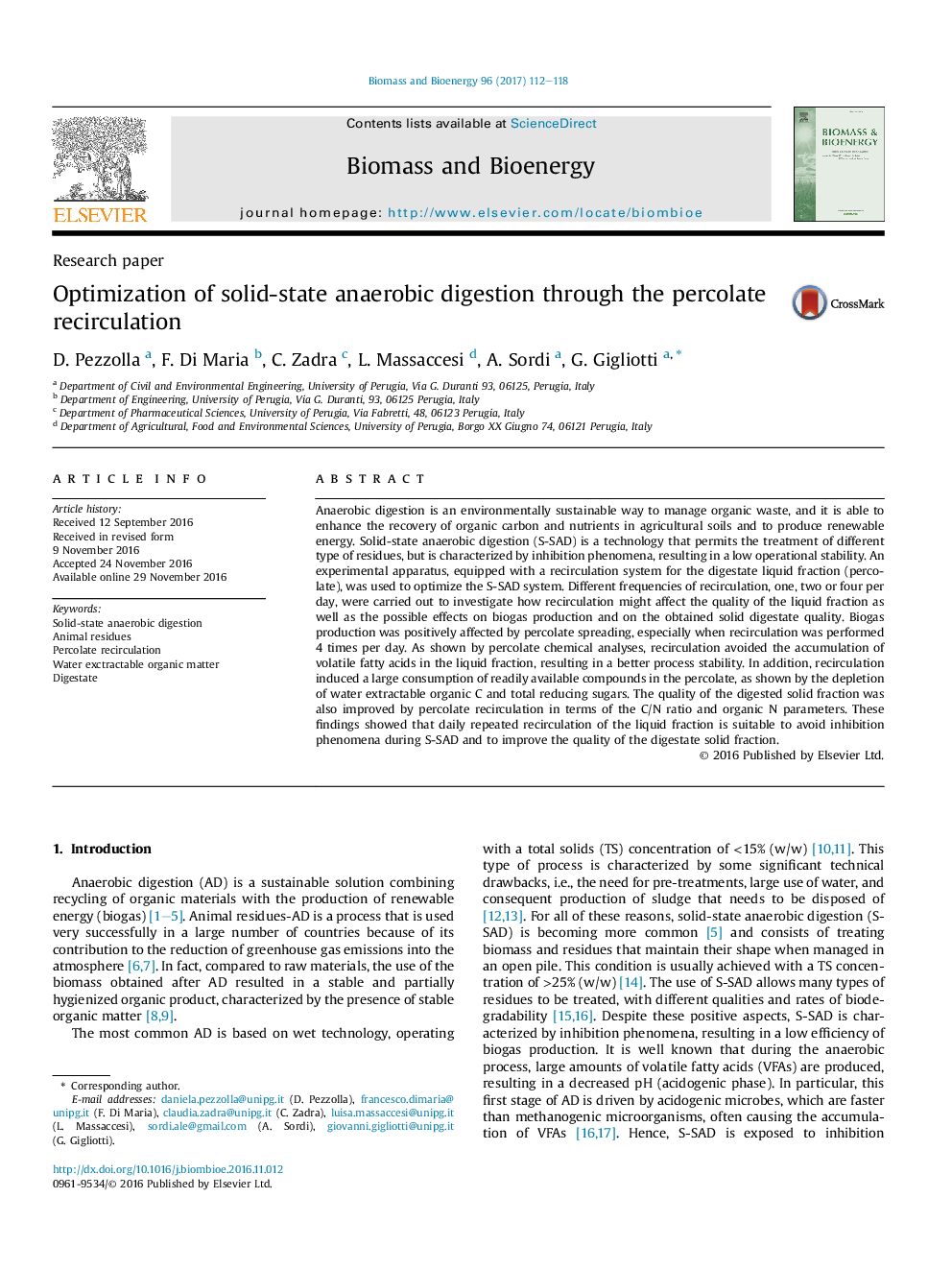| Article ID | Journal | Published Year | Pages | File Type |
|---|---|---|---|---|
| 4996409 | Biomass and Bioenergy | 2017 | 7 Pages |
â¢The S-SAD of animal residue permits to obtain renewable energy.â¢The daily repeated percolate recirculation avoids inhibition phenomena.â¢The chemical characteristics of WEOM affect the stability of the S-SAD.â¢The recirculation frequency influences the quality of the final solid digestate.
Anaerobic digestion is an environmentally sustainable way to manage organic waste, and it is able to enhance the recovery of organic carbon and nutrients in agricultural soils and to produce renewable energy. Solid-state anaerobic digestion (S-SAD) is a technology that permits the treatment of different type of residues, but is characterized by inhibition phenomena, resulting in a low operational stability. An experimental apparatus, equipped with a recirculation system for the digestate liquid fraction (percolate), was used to optimize the S-SAD system. Different frequencies of recirculation, one, two or four per day, were carried out to investigate how recirculation might affect the quality of the liquid fraction as well as the possible effects on biogas production and on the obtained solid digestate quality. Biogas production was positively affected by percolate spreading, especially when recirculation was performed 4 times per day. As shown by percolate chemical analyses, recirculation avoided the accumulation of volatile fatty acids in the liquid fraction, resulting in a better process stability. In addition, recirculation induced a large consumption of readily available compounds in the percolate, as shown by the depletion of water extractable organic C and total reducing sugars. The quality of the digested solid fraction was also improved by percolate recirculation in terms of the C/N ratio and organic N parameters. These findings showed that daily repeated recirculation of the liquid fraction is suitable to avoid inhibition phenomena during S-SAD and to improve the quality of the digestate solid fraction.
